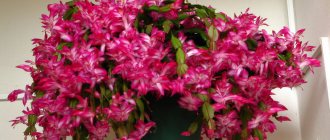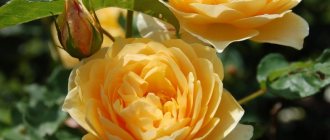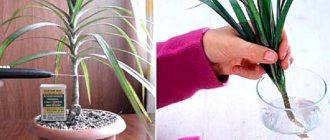There are more than 200 species of this plant and more than a thousand varieties and hybrids in the world, bred in the wake of mass passion for these beautiful flowers. The most common plant in gardens is the Japanese Camellia (Camellia japonica) - a luxurious but capricious shrub that grows better at home. How to grow garden camellia - planting and care in open ground, propagation, how to prepare the shrub for winter, what frost-resistant varieties there are - you will learn about all this from this article.
History of camellias
Today, more than 200 different types of camellias are known - all of them grow in the east. Camellia is known in Japan as Tsubaki. For many centuries, before the Westernization of Japan, the native Tsubaki, or “tree with shining leaves,” occupied a special place in Japanese thought.
In the Shinto religion, it was believed that gods in spiritual form make Tsubaki flowers their home during an earthly visit. Tsubaki plantings were an integral feature of temple gardens, cemeteries, and other places associated with the religious life of the community.
general information
Camellias are difficult to describe because they are so diverse. There are shrubs and trees, and their height varies from 2 to 20 m. They actively branch, and the stems become lignified and bare over time. The leaves are usually oval or ovate, on short petioles, with slightly raised veins.
Camellia blooms with spectacular large flowers up to 12 cm in diameter. Decorative varieties resemble tea roses, especially selected double varieties. Flowering begins in late autumn and continues throughout the winter. The main shades are white, pink, yellow and red. There are also variegated petals.
Photo: pinterest.ru
Camellia japonica
By all accounts, the Camellia Japonica arrived in London on an East India Company ship. Tea was brought to Europe on East India Company ships from China. Officials tried to bring tea plants to England for propagation, but either by mistake or on purpose, the Chinese sent the seeds of the Camellia japonica plant instead.
By far the most important ornamental Camellia is believed to come from Japan - hence the name. The tree grows up to 30 centimeters in height. In the wild it grows as undergrowth on hillsides.
The flowers vary in size and color, usually having five to six petals and being red. They bloom in winter and have beautiful shiny evergreen leaves and an interesting brown trunk.
Varieties
When buying camellia seedlings, you need to pay attention to ensure that the variety is as frost-resistant as possible. Hybrids of the species and varieties of C. japonica, C. saluenensis, C. oleifera and C. sasanqua are much more resistant.
The following camellia hybrids are distinguished by increased frost resistance; they can grow in the ground throughout the year in the southern regions:
- "Lady Cambell" Lady Cambell is one of the few camellia varieties with a delicate aroma. The flowers resemble begonias, double, pink with yellow stamens.
- "Nobilissima" Nobilissima is a variety with white, double flowers, similar to peonies.
- "Wintes Hope" Winter's Hope is a variety with white semi-double flowers with yellow stamens.
- "Vintes rose" Winter's Rose - with pink flowers.
- "Polar Ice" Polar Ice - white flowers, yellow stamens.
Photo. Variety "Polar Ice"
- "Dr. King" Dr King - pink, double flowers with yellow stamens in the middle.
- “Spring Festival” Spring Festival – soft pink double flowers, growing in groups on the shoot.
- "Nuccio's Pearl" Nuccio's Pearl - very beautiful flowers, double petals are white and pink.
Their frost resistance is slightly higher than that of other varieties, but still leaves much to be desired, since the plants are able to withstand temperatures down to -5 -10 degrees C.
The following varieties can withstand lower temperatures:
- “Empress” is a garden camellia, planting and care are simple, a variety of Chelyabinsk selection, blooms in summer, frost-resistant.
- "Black Lace" Black Lace is an old, proven hybrid of Camellia reticulata and Camellia williamsii. Withstands temperatures of -20 °C. The flowers are red, double, flowering period: April – May for 6-8 weeks. The leaves are dark green, leathery, shiny, and look impressive.
- “Donation” Donation is one of the best varieties with a frost resistance zone of 7 - 8 (-15 -17 degrees C). Large semi-double pink flowers are decorated with a delicate pattern of veins. Compact variety with dark green leaves.
- "Hagoromo" Hagoromo - flowers are semi-double, white and pink. Withstands frosts down to -22-24 °C.
- "Elegens" Elegans is a variety with pink, semi-double flowers. Withstands frosts down to -15 °C. Blooms in April.
- "Rainbow" Rainbow - a variety with light pink petals, can withstand frosts down to -18 degrees Celsius.
Interesting varieties of Japanese camellia:
- "Alba Plena" Alba Plena - a variety suitable for lovers of elegant, white-flowering shrubs. The flowers are semi-double with charming yellow stamens.
- "Berenice Boddy" Berenice Boddy is a variety with pink flowers with yellow stamens protruding beyond. The flowers resemble hibiscus in appearance.
- M. Wilson is a variety with pink flowers with a feathery center, the flower resembles begonias in appearance.
- "Cinderella" Cinderella is a variety with a pink flower, with long yellow stamens. The flowers resemble hibiscus with an interesting arrangement of veins in a darker shade.
- "Descanso Yuletide" Descanso Yuletide is a salmon-red variety with long yellow stamens and green leaves.
- "Kramer's Supreme" Kramer's Supreme is a variety with green foliage and double red flowers, similar to peonies.
- "Magic Moments" Magic Moments is a pink variety with green leaves, flowers reminiscent of old varieties of roses or begonias.
- "Tom Knudsen" - red flowers look great against the background of dark green leaves.
- “Sweetsert” Sweetheart is a variety with pink, double flowers reminiscent of begonias.
- "Ted Kohl" Ted Kohl is a multi-colored plant with green and green-yellow leaves and red and white flowers.
- "Thelma Dale" Thelma Dale is a variety with double pink flowers, with visible yellow stamens. Reminds me of roses and begonia.
- "Tiffany" Tiffany - red, double flowers with inconspicuous yellow stamens.
- “Tomorrow” Tomorrow – flowers are red with a salmon tint.
The above mentioned varieties are the most popular and most often chosen for gardens and indoor decoration.
In regions with frequent early frosts, spring-blooming varieties should be selected; in areas where there is a danger of late spring frosts, it is better to plant camellia varieties that bloom in the fall.
The soil
When it comes to indoor care, camellias grow best in fertile, acidic, moist, well-drained soils with a high content of organic matter. In alkaline soil, plants do not thrive and may suffer from iron deficiency. If the soil is sandy, add equal parts oak leaf mold or coarse peat and fine pine bark to the pot. Camellias do not cope well with large amounts of fertilizer, so do not overuse them.
Description
The camellia is native to the countries of Central and Southeast Asia:
- Japan;
- China;
- Philippine Islands;
- countries of Indochina.
Under natural conditions, camellia grows as a shrub or tree, depending on the species. The most common type, Camellia sinensis, is called the tea bush. Its leaves are dried and used to make tea, hence the name “tea bush”. The decorative nature of camellia makes it an adornment of parks and gardens. Thanks to the work of breeders, new hybrid varieties have been developed.
The most famous types of camellia that are grown indoors are the following:
- Japanese;
- Chinese;
- mountain.
Japanese camellia
Japanese camellia grows up to 12 meters in places where it grows naturally. Flowers of double or semi-double structure have different shades from white to red. There are specimens with variegated flowers, solitary or collected in inflorescences. The leaves have a dark green tint.
Chinese camellia grows up to 15 meters and is distinguished by oval leaves with white edges. White flowers have a delicate aroma.
Mountain camellia grows as a bush up to three meters. On thin branches with oval leaves framed by teeth, large flowers grow up to 7 cm in diameter and emit a delicate aroma.
Chinese camellia
Mountain camellia
For indoor growing, camellia montana and japonica are more often used. The basis for selection is the species of Japanese camellia, which has good survival rate. Camellia blooms in winter, from November-December to April.
Watering
Indoor camellia flowers are susceptible to drought due to their shallow root system. Camellias need regular watering for the first three years after planting. Young plants may die if the soil is too dry.
It is necessary to water the flower and rhizome 1-2 times a week in spring, and 2-3 times in autumn. Old camellias are quite drought tolerant.
Water is not only necessary for normal growth, but also ensures the constant absorption of minerals and maximum expansion of the cells that make up the new growth.
Irregular water supply interrupts the growth process, which can lead to stunted leaves and stems.
Transplantation after purchase into open ground
The density of its flowering in the future depends on how accurately all the conditions for planting garden camellia were met.
What is needed for planting
To plant a plant in open ground, you should decide on the plant variety and purchase a seedling. The optimal time for acquisition is from early May to mid-July. Seedlings must be older than 4 years. The roots should look powerful, the shoots should look woody. If the seedling is younger than this age, it can grow in a tub, but in the open air. During frosty periods, it is brought onto a covered veranda or balcony.
Optimal place
The ideal place for camellia is an area with diffused light. Moreover, there should be scattered sunlight throughout the day. It is advisable to avoid direct sunlight on the leaves of the plant.
Planting camellia
When choosing a location, areas with through winds should be excluded. It is recommended to plant the semi-shrub on a small hill. This will prevent water from stagnating in the root system.
Step by step planting process
- Dig a planting hole. Its diameter should be 2 times larger than the root system.
- A drainage layer consisting of medium-sized pebbles is laid on the bottom. The layer thickness should be approximately 15 cm.
- A layer of prepared substrate is laid out on the drainage layer.
- If the camellia was purchased in pots, then the seedling is removed in such a way that a lump of earth remains on the root system. This lump is placed in the planting hole on a layer of substrate and sprinkled with prepared soil on top. If the roots of the seedling are bare, then they are carefully laid out on a layer of soil and sprinkled with soil. It is recommended to press it down on top to avoid air accumulation between the roots.
- The plant should be watered abundantly.
Diseases
Camellia plants are susceptible to several pests, including aphids, mealybugs and scale, which can be controlled with insecticidal soap or systemic insecticides.
Uneven watering can cause camellia buds to drop before they open, while soil that is not acidic enough can cause the leaves to turn yellow.
Dieback disease is caused by the fungus Glomerella cingulata. Infections occur through wounds or natural openings. Dieback symptoms initially appear as small, dark, sunken areas on branches and stems.
As the canker grows, the infected stems become girdled. The stems above this belt gradually die, causing the leaves to wilt. At first, only individual branches or stems are affected. It is necessary to cut off infected branches and spray the plant with benomyl.
Reproduction methods
There are 4 ways to propagate camellia by seeds, cuttings, grafting and cuttings. Cuttings and rooting branches are simpler and more popular methods that even an unprepared beginner can handle.
The sowing method is more complex and time-consuming, and the plants may not convey their varietal qualities. The method of propagation by vaccination requires certain skills and adherence to rules. Not the most difficult method, but it is used very rarely.
Cuttings
The method is suitable for all species of camellia garden. The main advantage is the preservation of the varietal characteristics of the mother plant in young seedlings.
Breeding stages:
- To collect planting material, select a healthy, well-developed plant with pronounced varietal characteristics.
- Cuttings are cut from young shoots with green and slightly woody bark. The cut points on the mother plant are sprinkled with ash or covered with garden varnish.
- The material is harvested in January or June, at a time when new buds are formed on the shoots. The cuttings should have at least 3-4 buds and several leaves.
- Cut the cuttings at an angle of 45°.
- The length of shoots for planting should be at least 10–15 cm.
- The cuttings are rooted in soil consisting of a mixture of sand, turf and peat leaf soil.
- Rooting is carried out in greenhouses, greenhouses or greenhouses. As a last resort, the cuttings are rooted on the windowsill under film or glass.
- Young shoots are sprayed, watered and ventilated.
- The root system is formed approximately 40-50 days after collection.
Transplanting cuttings into flowerpots or open ground is possible only 2–3 years after collection and rooting.
Guseva Ulyana
Ask a Question
Question to the expert
How can I propagate a climbing variety of garden camellia?
Climbing varieties are well propagated by cuttings and the allotment method. The technology for collecting and preparing the material does not differ from the methods of propagation of shrub and tree species.
Bends
The fastest propagation method, which allows you to get a young plant in the second year. To do this, choose a strong and healthy branch on the mother bush and bend it to the ground. The shoot is sprinkled with soil, and waiting for rooting and sprouts to appear.
Usually new shoots appear the next year. Then the rooted shoots are cut from the main branch, separated and planted in open ground. The cut areas are powdered with ash or crushed coal.
Seeds
Camellia seeds quickly lose their viability, so only freshly harvested seed is planted. It should be remembered that in cold climatic zones, fruits do not set on plants, and they rarely ripen.
Planting stages:
- Camellia seeds are covered with an oily coating, so they are considered difficult to germinate. To activate development, seed material is soaked in a growth stimulator for several hours.
- The seeds are sown in a moist, warm mixture of humus and sand. And cover with film or glass.
- Germination temperature is from 18 to 25 °C. It is necessary to monitor humidity and constantly ventilate the plantings.
- The first shoots may hatch only after 1–3 months.
- Tender seedlings react negatively to sunlight, temperature changes and drafts.
- After 1–3 leaves appear on the sprouts, they are planted in individual small-diameter cups.
The time from sowing to planting camellias in open ground takes on average 4 years. Before planting, plants are hardened off for 1–2 months.
Typically, breeders use this method to obtain new varieties of camellia garden.
Graft
First of all, planting material is collected from the mother bushes. Next, a split is made on the donor bush almost right next to the ground. A cutting is placed under the cut bark and strengthened with twine. The grafting site is coated with garden varnish and added dropwise. The plant is covered with film or a plastic cap to create greenhouse conditions.
The cutting takes root within several months. With this method of propagation, a young seedling can bloom as early as next year.
Ticks
Spider mites are small and often difficult to spot on camellias. You need to place a piece of white paper or cloth under some leaves, then tap the leaves to remove the mites. They can be seen moving on white paper.
Plants infested with mites have foliage that appears dusty. If mites are present, cobwebs can be seen on the surface of the leaves.
Mistakes of novice gardeners
- Camellia sheds its leaves - very dry soil. Watering time is determined by the condition of the soil; if the soil has dried out by 5 cm, then the plant needs moisture.
- The leaf blade becomes brown, and unopened buds fall off - the shrub is overflowing. In this case, the plant is transplanted into a new substrate.
- The leaves turn brown due to sunburn. The flower grows best on the east or west side.
A capricious plant - camellia
Camellia is an ornamental plant with a long flowering period. It will perfectly complement both your home interior and will be indispensable in landscape decor. In order for a shrub to delight with its flowering, it is necessary to surround it with care and love.
Root Rot
Several different fungi that infect and kill fine feeding roots cause these diseases. Root diseases are associated with plants grown in poorly drained soils.
If you do decide to try growing camellias at home, place the plant in the coolest part of the house. Places such as verandas and greenhouses.
Provide indoor-grown camellias with 8 to 10 hours of light per day.
Houseplants are susceptible to root rot. It is important that you only water the plant when the soil is just dry.
Camellias grown indoors will grow much slower than their outdoor counterparts. Fertilize every 3-4 months.
Symbolism and interesting facts
In China, this beautiful plant symbolizes beauty and is the personification of fortitude, because it blooms in autumn and winter. According to Feng Shui, the flower attracts good luck. In ikebana it is combined with a pine branch. This composition equates longevity, and the flower means tenderness. In China, the red camellia symbolizes a sincere feeling of love, yellow - fiery passion, white - dreams and anticipation of a dream coming true.
For the Japanese, the camellia symbolized the short life of a warrior, lived in the glory of his victories. It’s not for nothing that it was originally considered the flower of the samurai. There was also a belief that the warrior who touched her would soon say goodbye to life. It arose from the fact that the camellia, when it blooms, does not scatter in a shower of petals, but falls to the ground as a whole inflorescence, like a head from its shoulders.
Being the flower of the samurai, the camellia is considered a good choice for a man's tattoo. Her image will testify to the endurance and good taste of the owner of the tattoo and will attract good luck to him. For the Japanese, the image of white camellias on a tattoo is a symbol of long life.
By the way, there is a very interesting article about the most beautiful tattoos on our website most-beauty.ru. If you are thinking about getting a tattoo, follow the link and you will find something suitable for yourself.
At all times, this flower has had a dual meaning. On the one hand, it is a symbol of nobility and spiritual purity, on the other, it is the personification of sadness and cold indifference. An interesting fact is that the white camellia in America was used as a symbol of the light-skinned race among adherents of the Ku Klux Klan.
A beautiful tsubaki is considered a symbol of cold beauty. It is sometimes called the “stone flower”, which is preferred by women who can love only according to calculation. Therefore, these flowers are rarely given, and even more so, it is not customary to use them in wedding bouquets. But jewelry with camellias, which are found in many collections, are considered a valuable gift.











